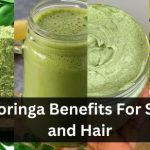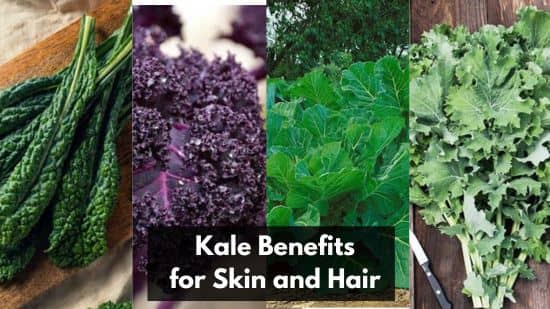
Kale Benefits for Skin and Hair
Kale, often hailed as a superfood, has earned its reputation not just on dining tables but also in beauty circles. Rich in vitamins, minerals, and antioxidants, it’s no surprise that this green leafy vegetable is making its way into the skincare and haircare regimens of many. This article delves deep into the kale benefits for skin and hair, backed by nutrition science and personal success stories, to showcase why kale might just be the secret ingredient you’re missing.
Understanding Kale
What is Kale?
Kale, scientifically known as Brassica oleracea, belongs to the cruciferous vegetable family, which includes cabbage, broccoli, and Brussels sprouts. This leafy green is packed with essential vitamins, minerals, and antioxidants, making it a nutritional powerhouse for overall health and well-being.
Nutritional Profile of Kale
Rich in vitamins A, C, and K, as well as minerals like calcium, potassium, and iron, kale offers a diverse array of nutrients essential for maintaining healthy skin and hair. Its high antioxidant content helps combat free radical damage and promotes cellular regeneration, resulting in youthful, glowing skin and strong, vibrant hair.
Kale Benefits for Skin and Hair
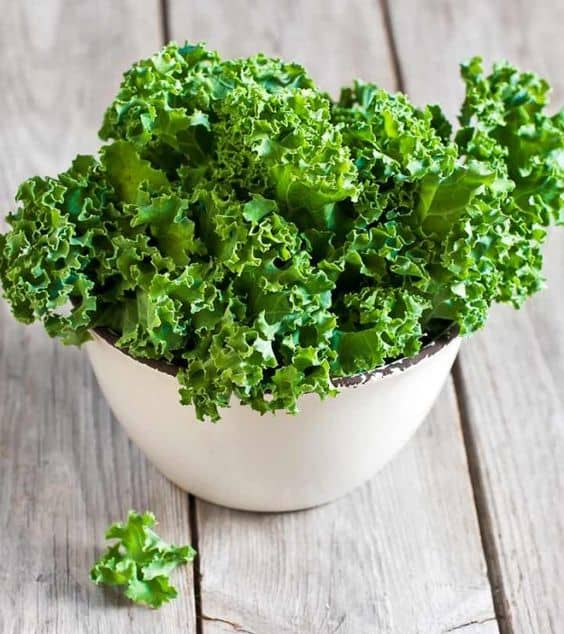
Credit: stylecraze.com
Kale’s benefits for the skin and hair are rooted in its remarkable nutritional composition. Abundant in essential vitamins like A, C, and K, as well as potent antioxidants like quercetin and kaempferol, kale offers a holistic approach to skincare and hair care. These nutrients work synergistically to shield the skin from oxidative damage, combating signs of aging and environmental stressors. Moreover, they play a crucial role in maintaining a healthy scalp environment, fostering optimal conditions for hair growth and vitality. With kale incorporated into your diet or beauty regimen, you’re not just nourishing your body; you’re embracing a natural and effective path to radiant skin and luscious locks.
Benefits of Kale for Skin
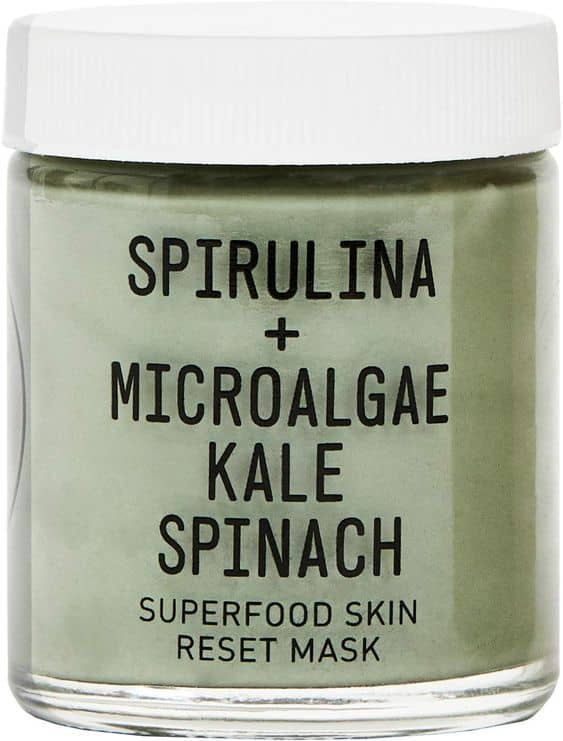
Credit: amazon.com
Due to its diverse range of vitamins, minerals, and antioxidants, kale provides a multitude of advantages for your skin. These nutrients work together to nourish and replenish the skin, promoting a healthy and radiant complexion. Regular consumption of kale can help improve skin texture, reduce signs of aging, and protect against environmental damage.
Enhanced Hydration
Kale’s high water content acts as a natural moisturizer, infusing your skin with essential hydration to maintain its youthful appearance and suppleness. Adequate hydration is crucial for preserving the skin’s elasticity, ensuring it remains firm and resilient against signs of aging like dryness and flakiness. By incorporating kale into your diet, you not only nourish your body with vital nutrients but also provide your skin with the hydration it needs to thrive and glow from within.
Youthful Appearance
The abundant presence of vitamin C in kale acts as a catalyst for collagen synthesis, effectively diminishing the visibility of fine lines and wrinkles. By integrating kale into your regular diet, you can consistently nourish your skin with this vital nutrient, aiding in the preservation of a youthful and vibrant complexion. With its ability to enhance skin firmness, kale serves as a natural ally in the fight against signs of aging, empowering individuals to maintain healthy and resilient skin over time.
Improved Skin Tone
The presence of Vitamin A in kale stimulates the renewal of skin cells, contributing to a smoother and more radiant complexion. Additionally, this nutrient aids in diminishing the appearance of dark spots and hyperpigmentation, leading to a more uniform skin tone. Regular consumption of kale can effectively address these concerns, leaving your skin looking clearer and more luminous.
Reduced Inflammation
Kale boasts a rich arsenal of anti-inflammatory compounds renowned for their ability to alleviate various skin woes, including acne, eczema, and rosacea. By incorporating kale into your daily diet, you can harness the power of these compounds to effectively reduce redness and inflammation, promoting a serene and more balanced complexion. Embracing kale as part of your skincare routine may unveil calmer, clearer skin, restoring comfort and confidence in your appearance.
Detoxification
Kale’s detoxifying properties help rid the body of toxins, which can manifest as blemishes and dull skin. Regularly consuming kale supports the body’s natural detoxification processes, resulting in clearer, more radiant skin.
Benefits of Kale for Hair
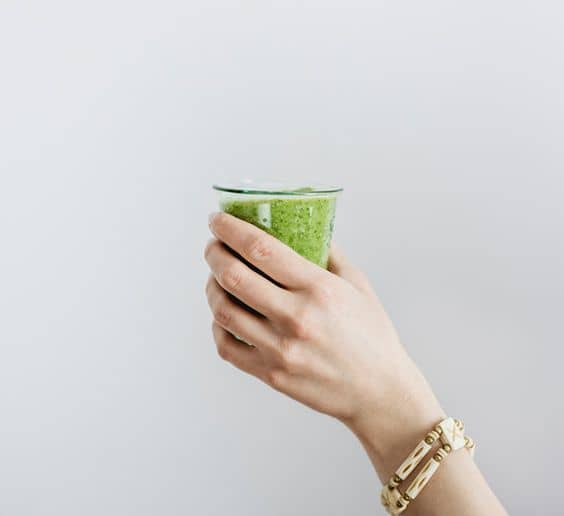
Credit: mindbodygreen.com
Kale isn’t just beneficial for your skin; it also promotes healthy hair growth and strength:
Nutrient-Rich Scalp
The vitamins and minerals in kale nourish the scalp, promoting a healthy environment for hair growth. A well-nourished scalp is essential for strong, resilient hair.
Stronger Hair Follicles
Kale contains iron and folate, which support healthy blood circulation to the scalp. This ensures that hair follicles receive an adequate supply of nutrients, leading to stronger, more resilient hair.
Prevention of Hair Loss
Kale’s high vitamin C content boosts collagen production in the scalp, promoting hair growth and preventing hair loss. Including kale in your diet can help maintain a full, healthy head of hair.
Improved Hair Texture
The nutrients in kale help improve the overall health of your hair, resulting in smoother, shinier strands. Regular consumption of kale can lead to hair that looks and feels healthier and more manageable.
Protection Against Environmental Damage
Kale’s antioxidants help protect the hair from environmental damage, such as pollution and UV radiation. This can help prevent hair breakage and split ends, keeping your locks looking healthy and vibrant.
Recipes for Glowing Skin and Luscious Hair
- Kale Smoothie Recipe: Kickstart your day with a nutritious kale smoothie to nourish your skin and hair from within. Blend together fresh kale leaves, bananas, strawberries, and a splash of almond milk for a delicious and rejuvenating treat packed with vitamins and antioxidants.
- Kale Salad Recipe: For a refreshing and nutrient-packed meal, toss together a kale salad with vibrant veggies like bell peppers, cherry tomatoes, and cucumbers. Drizzle with a tangy lemon vinaigrette for a burst of flavor and a dose of skin-loving nutrients.
- Kale Hair Mask Recipe: Revitalize your hair with a homemade kale hair mask. Combine blended kale leaves with coconut oil and honey for a hydrating and strengthening treatment. Apply to damp hair, leave on for 30 minutes, then rinse thoroughly for silky-smooth locks.
Different Types of Kale
Kale, a versatile leafy green, offers a diverse range of flavors, textures, and appearances across its various types, making it an exciting ingredient for culinary exploration. From the tightly ruffled leaves of curly kale to the long, dark green foliage of Lacinato kale, each variety brings its own distinctive characteristics to the table.
Curly Kale
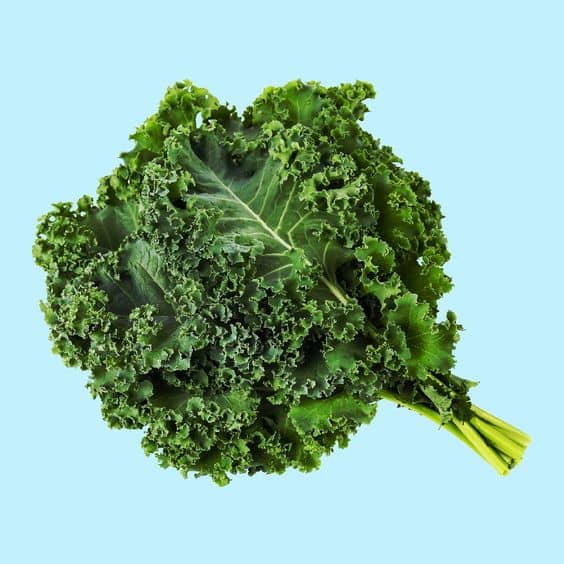
Credit: Living Food
- This is perhaps the most recognizable variety, with tightly ruffled leaves that have a crinkled texture.
- Curly kale is sturdy and holds up well in salads, soups, and stir-fries.
- It has a slightly bitter taste that becomes milder when cooked.
Lacinato Kale (also known as Dinosaur Kale or Tuscan Kale)
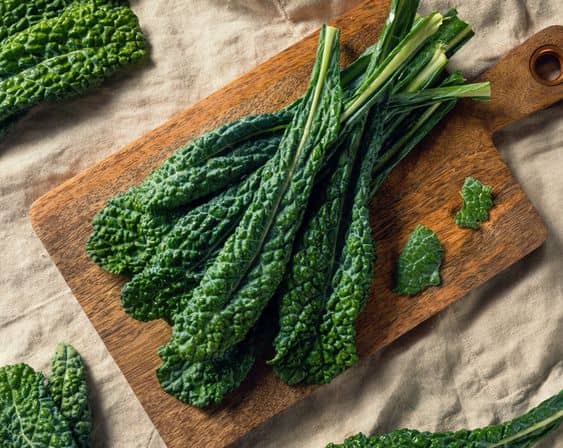
Credit: idechef.com
- Lacinato kale has long, dark green leaves that are narrow and bumpy, resembling dinosaur skin.
- It has a more tender texture compared to curly kale and a slightly sweeter flavor.
- This type of kale is popular in Italian cuisine and works well in salads, sautés, and pasta dishes.
Red Russian Kale
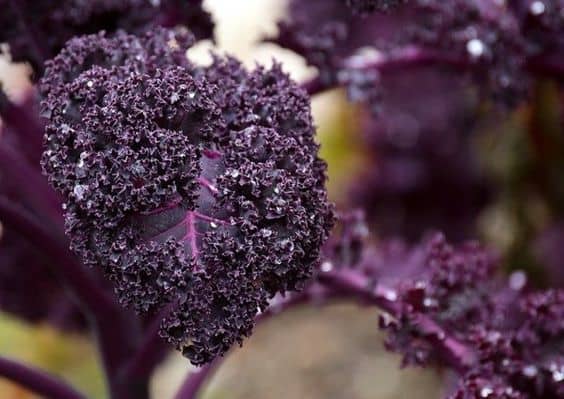
Credit: inheritedseeds.com
- Red Russian kale has flat, fringed leaves with purple stems and veins, giving it a vibrant appearance.
- It has a sweeter and milder flavor compared to other varieties, with a hint of peppery taste.
- This kale is often used raw in salads or lightly cooked in dishes like stir-fries and soups.
Siberian Kale
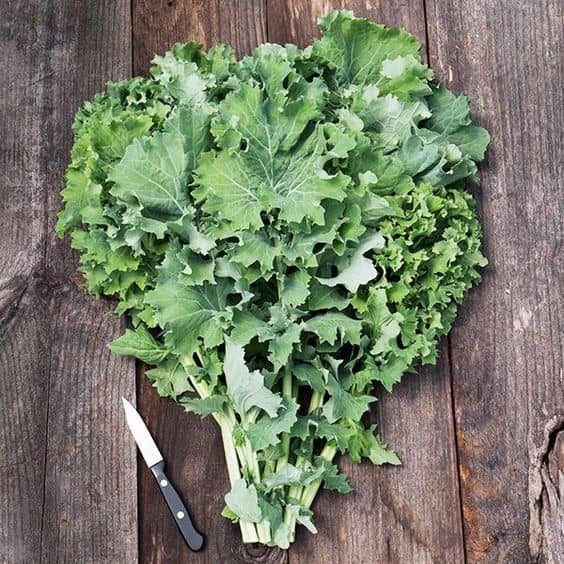
Credit: highmowingseeds.com
- Siberian kale has blue-green leaves that are smoother and broader compared to other varieties.
- It has a mild flavor and tender texture, making it suitable for raw consumption or cooking.
- Siberian kale is commonly used in smoothies and salads and as a garnish for various dishes.
Redbor Kale
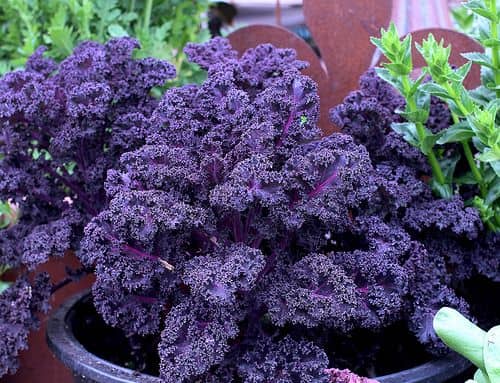
Credit: flickr.com
- Redbor kale features deep purple-red leaves that are frilly and ornamental.
- It has a slightly peppery taste and a more delicate texture compared to other types of kale.
- Redbor kale adds a pop of color to salads and is often used as an edible garnish for plating.
Portuguese Kale (also known as Tronchuda or Portuguese Cabbage)
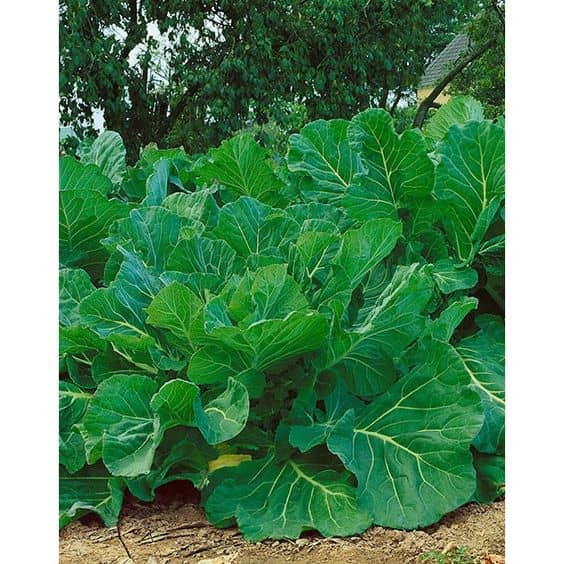
Credit: etsy.com
- Portuguese kale has large, broad leaves with thick stems and a slightly sweet flavor.
- It is commonly used in Portuguese cuisine, particularly in soups, stews, and traditional dishes like caldo verde.
- Portuguese kale holds up well to cooking and develops a tender texture when simmered in broths or braised with other ingredients.
Precautions and Considerations
Potential Side Effects of Kale Consumption
While kale offers numerous benefits, excessive consumption may lead to certain side effects, such as digestive issues or interactions with certain medications. It’s essential to consume kale in moderation and consult with a healthcare professional if you have any underlying health conditions.
Tips for Incorporating Kale Safely into Your Diet
To reap the benefits of kale without any adverse effects, vary your intake and incorporate it into a balanced diet alongside a diverse range of fruits, vegetables, and whole grains. Rotate between raw and cooked preparations to maximize nutrient absorption and minimize potential digestive discomfort.
FAQs
How can I include kale in my diet for maximum skin and hair benefits?
Incorporating kale into your diet is straightforward and beneficial. You can blend it into smoothies, add it to salads, or include it in your cooking, such as in soups or stews. Consuming kale in its raw form, like in salads or smoothies, preserves its vitamin C content, which is essential for collagen production and skin health. However, light steaming can enhance the availability of certain nutrients and antioxidants.
Is kale suitable for sensitive skin?
Yes, kale can be suitable for sensitive skin, but it’s important to introduce it gradually into your skincare routine. Topical kale products, like masks or serums, should be patch tested on a small area first. If you have known allergies to other cruciferous vegetables, you may want to consult with a dermatologist before applying kale topically. Consuming kale as part of your diet is less likely to cause skin irritation.
Can eating kale help with hair loss?
Kale is rich in nutrients like iron, folate, and vitamins A and C, which are vital for hair health. Iron helps carry oxygen to your hair follicles, promoting growth, while vitamin A aids in the production of sebum, which moisturizes the scalp and helps keep hair healthy. While kale alone cannot reverse hair loss caused by genetic factors or certain medical conditions, it can support hair health and potentially reduce hair loss due to nutritional deficiencies.
What’s the recommended daily intake of kale for beauty benefits?
There isn’t a one-size-fits-all answer to this question since individual nutritional needs vary. However, incorporating one to two servings of kale into your daily diet can contribute to the overall intake of vitamins and antioxidants needed for healthy skin and hair. A serving size is about one cup of raw kale or half a cup of cooked kale. Remember, a balanced diet rich in a variety of nutrients is key to maximizing beauty benefits.
How should I prepare kale to retain its nutrients?
To maximize kale’s nutrient retention, it’s best to consume it raw or lightly steamed. Raw kale salads or smoothies preserve the vitamin C and other raw nutrients. If you prefer it cooked, steaming kale for a short period (about 5 minutes) is ideal to retain its antioxidant properties and make some nutrients more bioavailable without losing too many vitamins through cooking.
Is there a difference between organic and non-organic kale regarding skin and hair benefits?
The primary difference between organic and non-organic kale is the way it’s grown, with organic kale being cultivated without synthetic pesticides or fertilizers. Both organic and non-organic kale offer similar nutritional benefits for skin and hair. However, some people prefer organic to reduce exposure to potential pesticide residues. Washing non-organic kale thoroughly can help remove some of the surface residues.
Conclusion
Embracing kale in your daily beauty and health regimen can offer significant benefits for your skin and hair, making it a superfood that transcends beyond just dietary nourishment. Its rich nutritional profile, packed with vitamins, minerals, and antioxidants, positions kale as a natural, potent ingredient for enhancing overall skin glow, promoting hair growth, and ensuring scalp health. By incorporating kale into your diet and possibly your topical skincare routine, you’re tapping into a source of nature’s finest nutrients.
However, as with any superfood, it’s essential to consider your individual health needs and potential sensitivities. Kale’s benefits are most effectively harnessed when it’s part of a balanced diet and a well-rounded skincare and haircare regimen. The versatility of kale makes it easy to include in your daily routine, whether through delicious smoothies, salads, or as a natural ingredient in DIY beauty treatments.
In conclusion, the journey to natural beauty and health is enriched by incorporating kale into your lifestyle. Its broad range of benefits for the skin and hair highlights the importance of choosing nutrient-dense foods for not only their health benefits but also for their beauty-enhancing properties. As we continue to explore and embrace the power of natural ingredients, kale stands out as a testament to the profound impact of nature’s bounty on our overall well-being and beauty.


